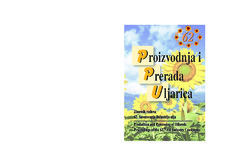Приказ основних података о документу
Ekonomski značaj šafranjike i uticaj genotipa na produkciju biomase
The economic importance of safflower and the influence of genotype on biomass production
| dc.creator | Ikanović, Jela | |
| dc.creator | Popović, Vera | |
| dc.creator | Rakaščan, Nikola | |
| dc.creator | Ljubičić, Nataša | |
| dc.creator | Dražić, Gordana | |
| dc.creator | Aćimić Remiković, Milena | |
| dc.creator | Petković, Zdravka | |
| dc.date.accessioned | 2022-10-06T09:01:44Z | |
| dc.date.available | 2022-10-06T09:01:44Z | |
| dc.date.issued | 2021 | |
| dc.identifier.isbn | 978-86-6253-132-2 | |
| dc.identifier.uri | http://fiver.ifvcns.rs/handle/123456789/3123 | |
| dc.description.abstract | Šafranjika pripada porodici glavočika (familia Asteraceae). Celokupna nadzemna generativna i vegetativna biomasa sorti najnovije generacije, može se upotrebiti na različite načine. U radu su ispitivani su parametri produktuvnosti dva genotipa šafranjike i mogućnost njihove upotrebe. Rezultati su pokazali da su utvrđene statistički značajne razlike u prinosima biomase, masi 1000 zrna i zapreminskoj masi u zavisnosti od genotipa (p<0,05). Prosečni prinosi bili su statistički veoma značajno veći u sorte šafranjike S-20 (4,43 t/ha) u odnosu na sortu Nutrasaff (4,20 t/ha). Prinos biomase bio je u pozitivnoj statistički visoko značajnoj korelaciji sa masom 1000 zrna (0,94**) i u pozitivnoj statistički značajnoj korelaciji sa zapreminskom masom (0,67*). U uslovima sve više izraženih globalnih klimatskih promena šafranjika može postati vrlo značajna ratarska biljka. | sr |
| dc.description.abstract | Safflower belongs to the family Asteraceae. The entire overhead generative and vegetative biomass varieties the latest generations, can be used in a variety of ways. The productivity parameters of two saffron genotypes and were investigated the possibility of their use. The results showed that statistically significant differences in biomass yields were found, mass of 1000 grains and volumetric mass depending on genotype (p<0.05). Average yields were statistically very significantly higher in saffron varieties S-20 (4.43 t / ha) compared to the Nutrasaff variety (4.20 t / ha). Biomass yield was positive statistically highly significant correlation with the mass of 1000 grains (0.94 **) and in a positive statistically significant correlation with volumetric mass (0.67 *). In the conditions of increasingly pronounced global climate changes saffron can become a very important crop | sr |
| dc.language.iso | sr | sr |
| dc.publisher | Novi Sad : Univerzitet u Novom Sadu, Tehnološki fakultet | sr |
| dc.publisher | Novi Sad : Institut za ratarstvo i povrtarstvo | sr |
| dc.publisher | Novi Sad : Industrijsko bilje | sr |
| dc.relation | info:eu-repo/grantAgreement/MESTD/inst-2020/200118/RS// | sr |
| dc.relation | info:eu-repo/grantAgreement/MESTD/inst-2020/200032/RS// | sr |
| dc.relation | Alternative cereals and oil flax as functional foods, Provincial Secretariat for higher education and scientific research, 2021–2024 | sr |
| dc.rights | openAccess | sr |
| dc.rights.uri | https://creativecommons.org/licenses/by/4.0/ | |
| dc.source | Zbornik radova, 62. Savetovanje industrije ulja "Proizvodnja i prerada uljarica", Herceg Novi, Crna Gora, 27. jun - 2. jul 2021. | sr |
| dc.subject | šafranjika | sr |
| dc.subject | genotipovi | sr |
| dc.subject | prinos biomase | sr |
| dc.subject | ekonomski značaj | sr |
| dc.subject | safflower | sr |
| dc.subject | genotypes | sr |
| dc.subject | biomass yield | sr |
| dc.subject | economic importance | sr |
| dc.title | Ekonomski značaj šafranjike i uticaj genotipa na produkciju biomase | sr |
| dc.title | The economic importance of safflower and the influence of genotype on biomass production | sr |
| dc.type | conferenceObject | sr |
| dc.rights.license | BY | sr |
| dc.citation.epage | 178 | |
| dc.citation.spage | 169 | |
| dc.identifier.fulltext | http://fiver.ifvcns.rs/bitstream/id/8760/bitstream_8760.pdf | |
| dc.identifier.rcub | https://hdl.handle.net/21.15107/rcub_fiver_3123 | |
| dc.type.version | publishedVersion | sr |


